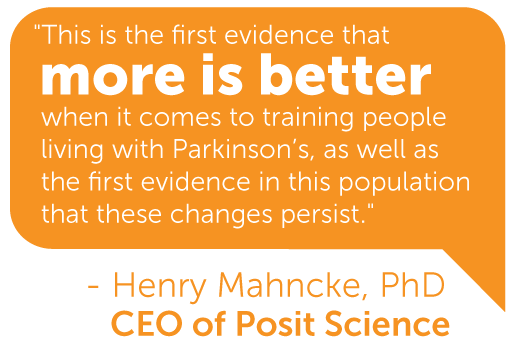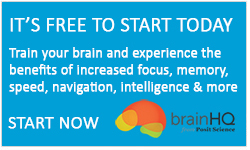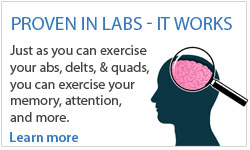A recent study has found that when it comes to Parkinson's patients, how much brain training the average person does directly relates to results. The study is a follow-on to an earlier study that found that  Parkinson's patients could improve their "Useful Field of View" (UFOV)—an important measure of processing speed—by training on five exercises currently available in BrainHQ. The new study shows that more training is better: each hour of training resulted in faster processing on the UFOV assessment. The study also showed that gains persisted over six months.
Parkinson's patients could improve their "Useful Field of View" (UFOV)—an important measure of processing speed—by training on five exercises currently available in BrainHQ. The new study shows that more training is better: each hour of training resulted in faster processing on the UFOV assessment. The study also showed that gains persisted over six months.
For more information, see the press release or the study text.
What brain exercises did the study participants use?
The brain exercises used in the study were five visual training exercises currently available in BrainHQ: Visual Sweeps, Hawk Eye, Double Decision, Target Tracker, and Eye for Detail. These exercises engage the brain's visual system (located in the occipital lobe) to improve visual processing and memory.
Each exercise trains specific functions of the visual system that are important to cognitive performance. For example, Target Tracker exercises the areas of divided attention, sustained attention, and working memory. To get a sense of what one of these visual brain exercises are like, you can watch a short video showing Target Tracker.
What is BrainHQ?
BrainHQ is an online brain-training system built by Posit Science and provided by its Canadian partner DynamicBrain in English in Canada (www.dynamicbrain.brainhq.com) and in French globally (www.dynamicbrain-fr.brainhq.com). It features 29 exercises that work out attention, memory, brain speed, intelligence, navigation, and people skills. The five visual exercises in the Parkinson's study are among these exercises. More than 100 papers have been published in scientific journals, including the Journal of the American Medical Association, on the BrainHQ exercises and assessments.






 English
English
 Français
Français



